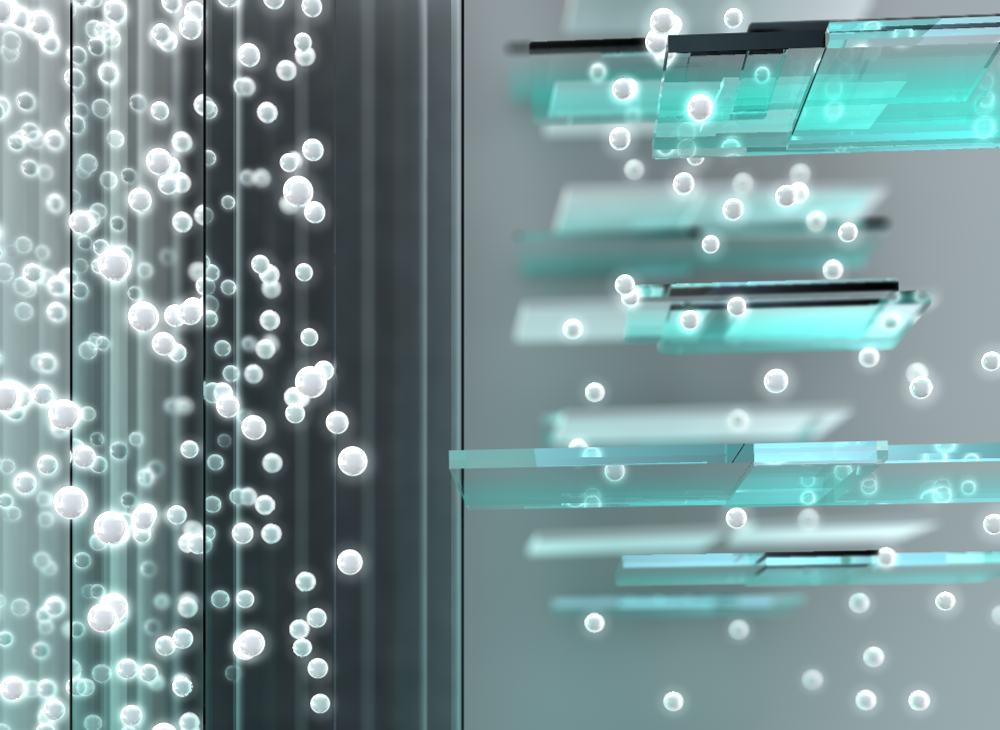An innovative approach to better energy storage
A Penn/Drexel research team has engineered a way to manipulate nanomaterials to stand up vertically on a scale that has potential for industrial applications

When it comes to cell phones, there are few things more frustrating than a short battery life. As the battery bar of a phone dwindles down below 10 percent, there’s a mad rush to find a charger and an outlet, and then it can take up to an hour for the battery to fully charge. Twelve hours later, the process repeats when the battery drains itself once again.
But researchers at the University of Pennsylvania and Drexel Universityare working together on a novel technique that will allow batteries and supercapacitors to store more energy and last longer as well as drastically reduce the amount of time they take to fully charge. The technique could lead to better phones and electric cars, and even wearable chargers woven into the fabric of a shirt. Their most recent results, which focused on supercapacitors, have been published in Nature.
According to lead author Yu Xia, there’s been a huge demand from industry for a way to develop new battery and capacitor systems with higher energy density (how much energy the devices can store) and power density (how fast the device can charge.) Researchers have been working on using two-dimensional nanomaterials that are atomically thin but a few hundred nanometers to microns in width, to accomplish this.
The problem is that these nanosheets tend to stack up horizontally like sheets of paper in a book. This results in a prolonged ion diffusion length that causes a huge suppression of their performances when the thickness of materials in the electrode approaches industrial standards. So when they are stacked up to 100 micrometers thick, the industry standard for energy devices, the materials lose their functionality.
“The ion diffusion problem in energy storage devices,” Xia says, “has been long recognized as one of the major obstacles impeding the industrial development of new batteries and supercapacitors with higher energy and power density.”
But the Penn and Drexel researchers have a completely new idea about how to tackle this problem. Xia, a postdoctoral fellow in Penn Professor Shu Yang’s lab approached a Drexel team in Professor Yury Gogotsi’s lab about aligning 2-D nanomaterials using a process called soft matter self-assembly. The researchers work with MXenes, a new class of nanomaterials discovered by Drexel University researchers and developed in Gogotsi’s lab, which are particularly well-suited for energy storage. Unlike graphene, which is only a 2-D layer of carbon, MXenes are much richer in chemical compositions, and thus, functions.
“About 30 MXenes have already been made, millions of compositions are possible, and at least a few MXenes can be made in 100-gram batches in our lab,” says Yury Gogotsi. “This is what makes them promising for large-scale industrial applications.”
Here, the researchers found a way to assemble the 2D titanium carbide MXene into liquid crystalline phases.
Soft matter self-assembly is a process that has been around for billions of years. It’s one of the key modes through which nature constructs living matter. The assembly process used by the Penn and Drexel teams, however, is unique: they make the atomically thin sheets stand up vertically using a familiar process — a process that drives the liquid crystal displays on phones, televisions, and laptops. This process, called alignment in the liquid crystalline phase, involves a special phase between the crystalline solid and the disordered liquid.

“The major novelty of our approach,” Xia says, “is that we are able to align the MXene flakes in the vertical direction, so the ion diffusion in the supercapacitors could be extensively accelerated, leading to the thickness-independent supercapacitors. Our design relied on the unique assembly of MXene into a long-range ordered, liquid crystalline phase using soft forces, allowing us to align them vertically nearly effortlessly. Directing the alignment of functional nanomaterials has just begun. Our work reported here demonstrates how effective it is in energy storage.”
Continue reading at Penn Today.
